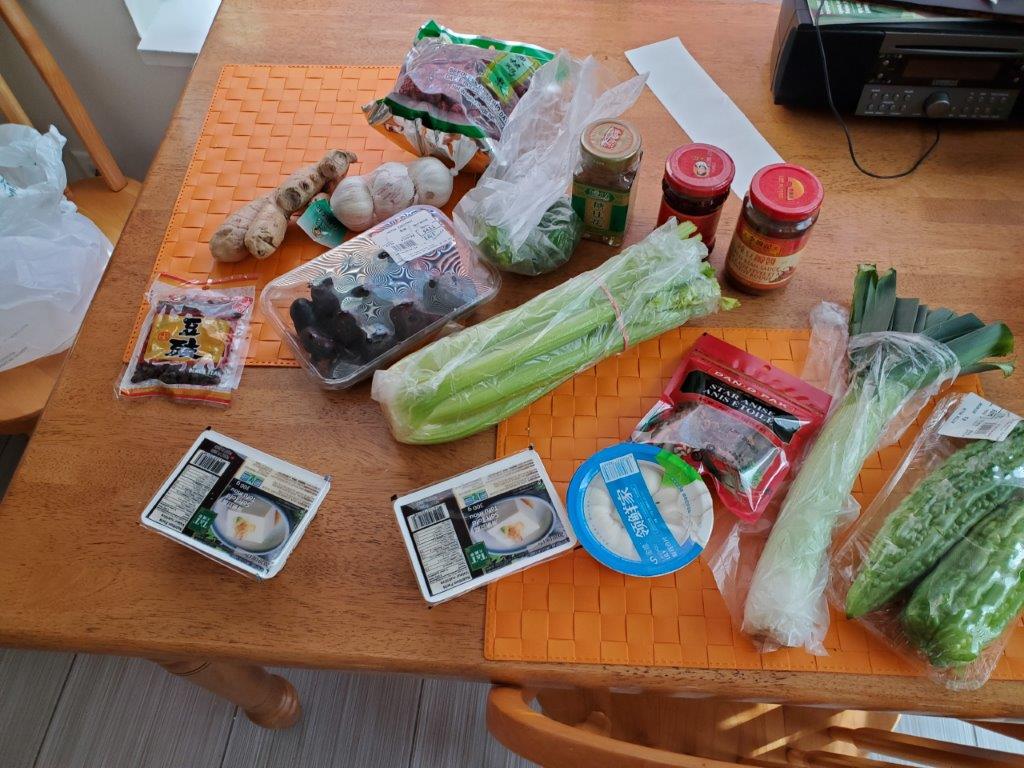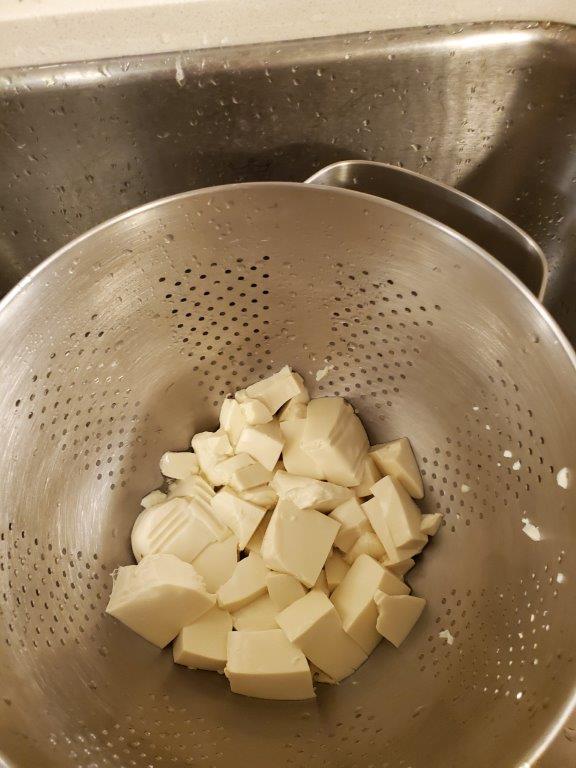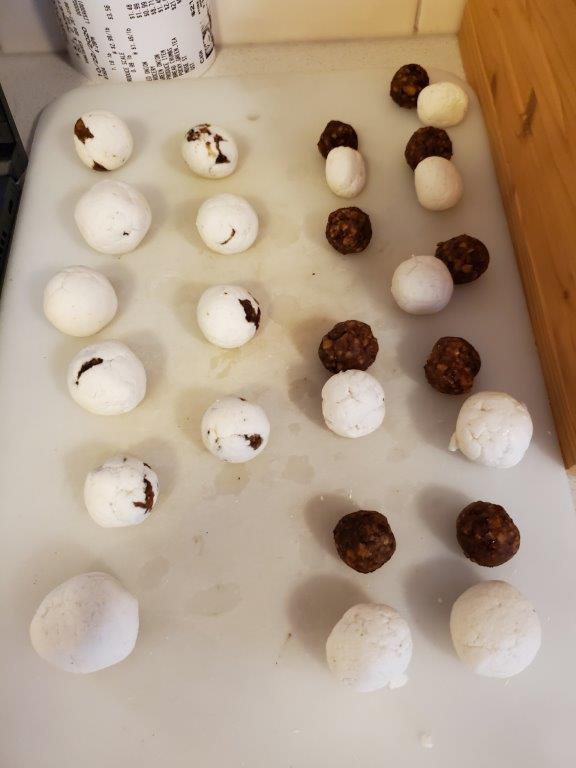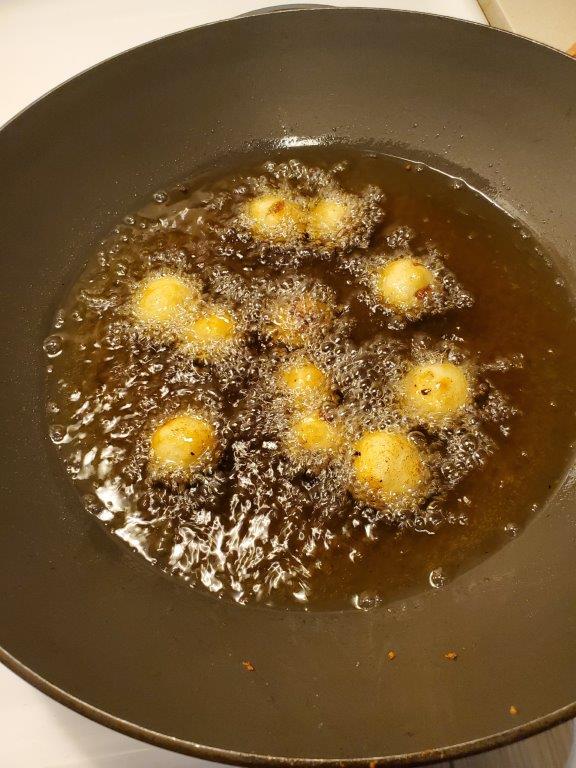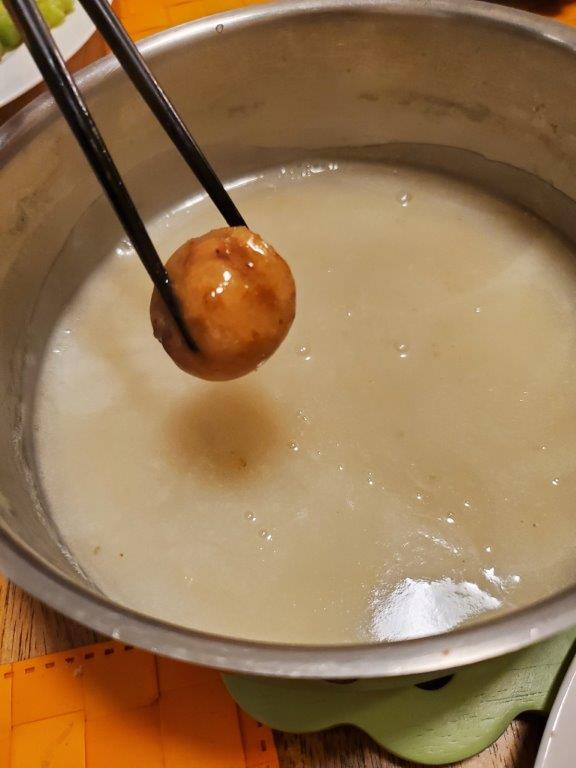The central highlands of China means we are into the spiciest region: Sichuan! However, that’s not the only region in the area with a food pedigree – Hunan is also one of the “eight great” cuisines, and there are others to consider as well. As always, let’s start by going shopping!
Lots of stuff we’d never cooked with this time around – Lily Blossom, Osmanthus Syrup, Dried Red Dates, Fresh Water Chestnuts, Fermented Black Beans. In addition, a fresh jar of something we HAVE used before, all the way back in our meal from Bhutan – spicy broad bean paste, or Doubanjiang. (This is the thing everyone THOUGHT I was holding last week when I pulled out the fermented bean curd. They are completely different, however.) We’ll talk about the various ingredients as we get to them, so let’s dive in.
Note that this is NOT the order we cooked things, but just one that makes sense in terms of the meal.
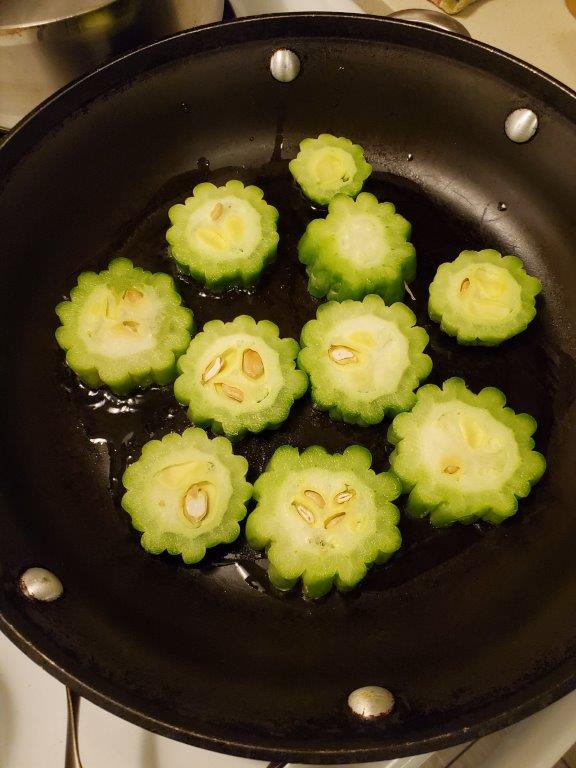
Our first dish was simple fried slices of bitter melon. The cookbook swore up and down that these were delicious. They were… not our favorite. We’ve had bitter melon before as a component in a larger dish, and it’s, well, bitter. All by itself, there wasn’t anything to distract from the bitterness, and the frying didn’t really do much to change that. Perhaps a different frying temperature, or type of oil, or slice size would have made them more interesting.
Or maybe we’re just Philistines, who knows?
OK, on to dish number two – a stir fried assortment of Lily Bulbs, Ginko Nuts, and Chinese Celery. Except the store was out of Ginko Nuts and Chinese Celery. So here’s a stir fried assortment of lily bulbs, cashews, and western celery:
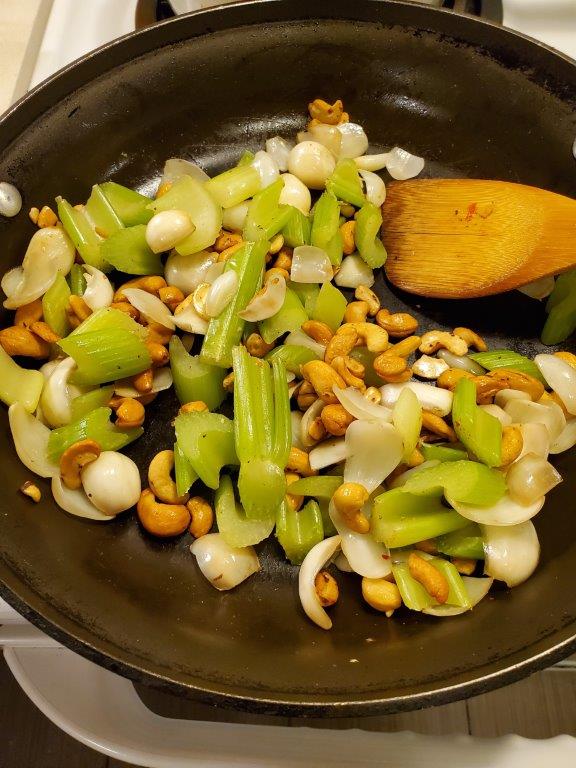
It was… crunchy. All of these things are crunchy. Yep. Crunchy. It would likely have been different with the correct ingredients. As it was, it was fine, but not exciting. Crunchy, mostly.
So – our first two selections are definitely not living up to Sichuan’s reputation for hot and spicy flavors. This is probably our fault – we picked the recipes, after all. There’s a lot of other things in the cookbook that might have worked, but we didn’t want to get too crazy with the vegetables so we could focus on the entrée.
The entrée DEFINITELY saved the meal from our otherwise humdrum menu choices. Mapo Tofu, an American restaurant staple, here in somewhat funkier form!
Once of you have your mise en place ready, this dish comes together fast, so it’s important to get all the prep setup ahead of time. On separate bowls, dishes, cutting boards, and colanders we had:
- Soft tofu, poached and drained.
- One leek, chopped.
- Ground beef, beaten into paste with the back of a cleaver. (That was fun)
- Chopped ginger
- Spice mix: Fermented black beans, Doubanjiang, ground chilies
- Cornstarch & water mixture
- Topping: toasted ground Sichuan peppercorns and chopped scallions
Into the wok with all of these things, in their correct sequence, being careful not to destroy the tofu! And at the end, here’s the final meal:
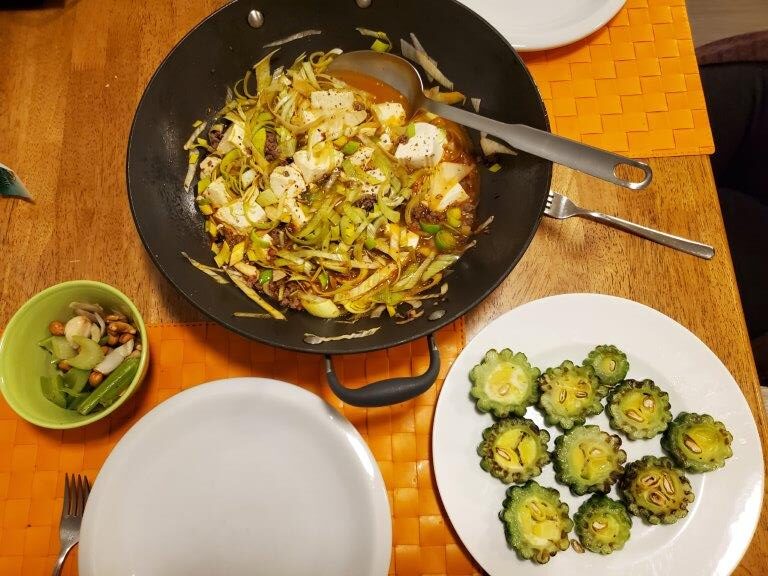
Did the Mapo Tofu bring the flavor? It sure did! It was nicely spicy, and thanks to the two bean sauces, also quite funky. Leek is not an ingredient I can recall finding in this recipe in a restaurant, but the crunch was a nice textural contrast to the soft meat and tofu. THIS is definitely going to come back to the table in the future.
Those of you who have been keeping score at home may have noticed that there’s several ingredients in the picture at the top that we haven’t used yet. That’s because we also made dessert! (There’s also a jar of Spicy Chili Crisp, which we didn’t use for this meal, but bought because we are trying to pretend we are hipsters.)
Dessert was actually the most complicated part of the whole process. There was an entire second PAGE of the recipe I didn’t notice until after we started. So what did we make? Water Chestnut Pastries with Red Date Filling.
To start, the dates come dried, so they have to be rehydrated.
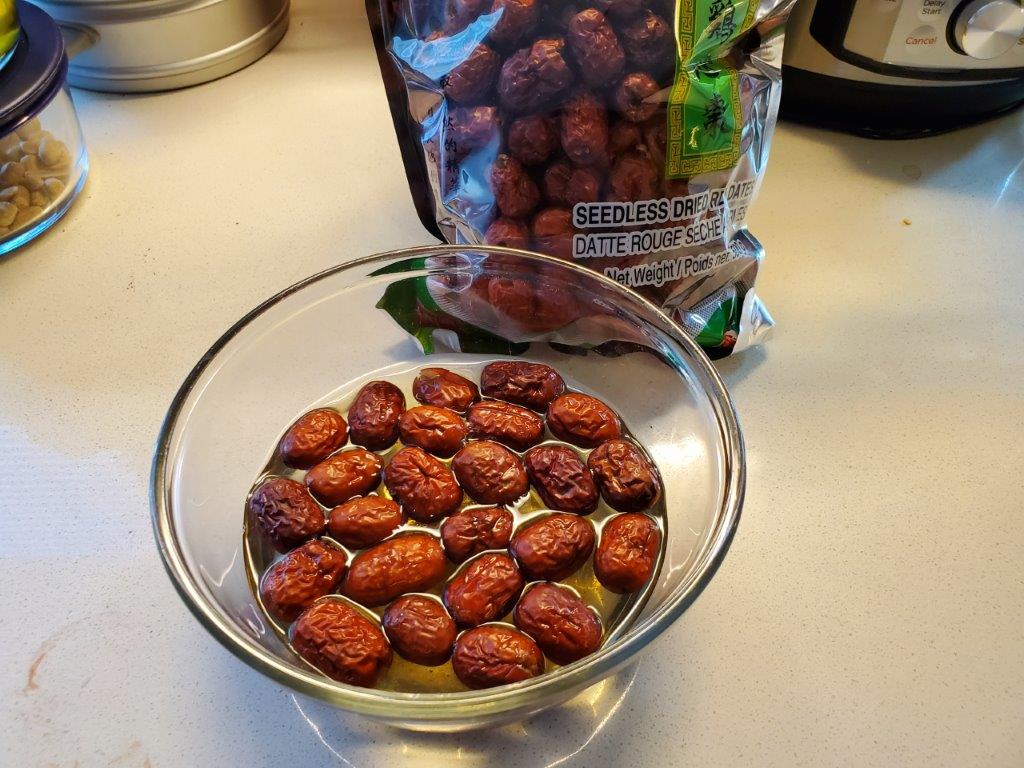
These things are pretty tasty, and can actually be eaten straight out of the bag. They’re also marked “jujubes,” which is objectively fun to say. (Try it!)
Next up, water chestnuts, which I had never encountered except in canned form. The fresh ones unsurprisingly taste better, but are also a LOT more work to peel.
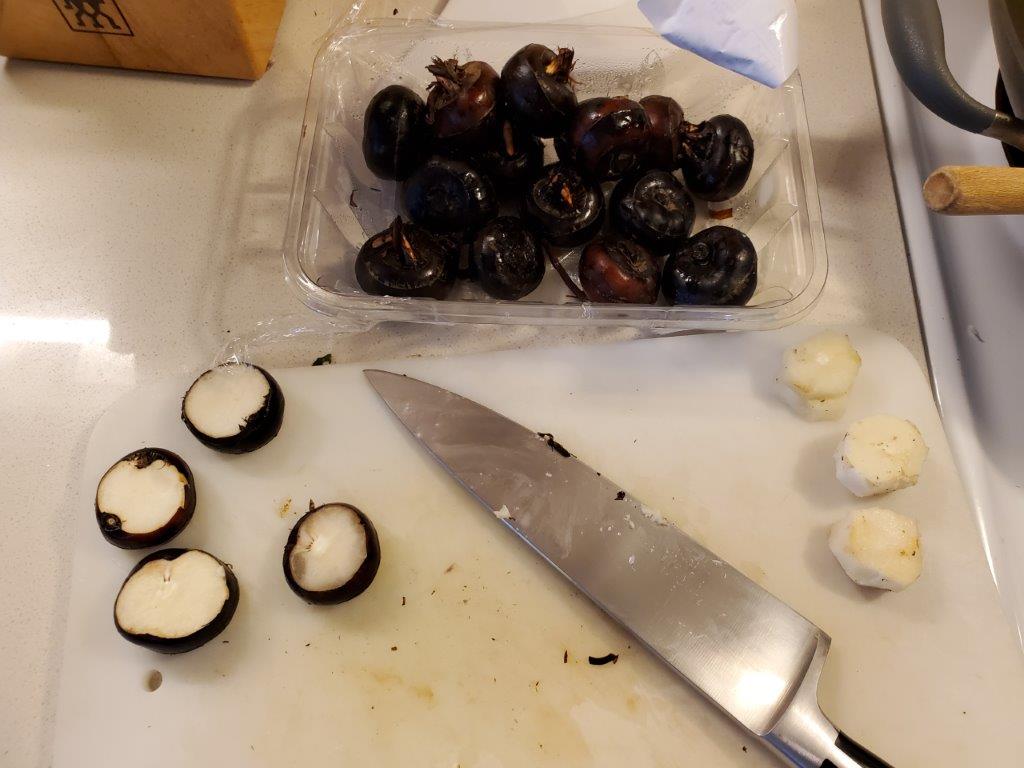
I eventually settled on a method where I cut the top and bottom off, then used a vegetable peeler on the sides. Is this the best way to do it? Who knows? (I mean – I’m sure LOTS of people know. Millions of Chinese home and professional cooks, for starters. But not me.) Optimum or not, it worked, and we had a bunch of peeled water chestnuts, that we then pureed and squeezed as much moisture out of as possible.
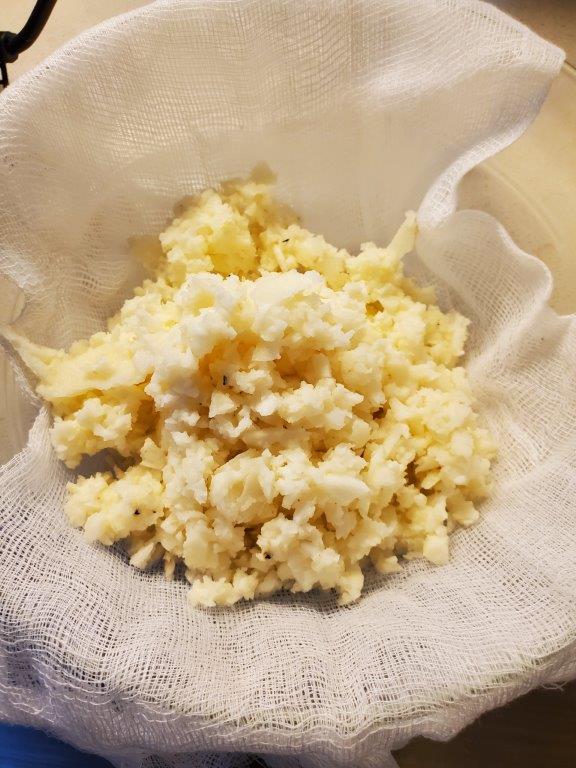
The dates ALSO get pureed, and toasted with a little oil, sugar, and salt to make a pasted. You roll it up into little balls. Then you puree the water chestnut paste with sticky rice flour and roll THAT into balls. Then you wrap the chestnut balls around the date balls and… GODDAMIT WOULD YOU PLEASE STOP SNICKERING?
Ahem.
At any rate, these get deep fried, because we haven’t yet deep fried anything this week, and it’s important to keep rolling the dice on burning the apartment building down.
Finally, you make a syrup from the soaking water from the dates, the pressed water from the chestnuts, osmanthus blossom syrup and, looking at the recipe while writing this up, 1/4 cup of rock sugar that I am one hundred percent certain that we completely forgot to add. (also some cornstarch for thickening.)
Thing is, we didn’t need the extra sugar. Osmanthus blossom syrup is a traditional ingredient used for flavoring Chinese pastries, and is already quite sweet. The sauce was delicious, and the pastries dipped in it were crunchy and flavorful. Lots of work, but these balls sure are tasty!
Sigh. I know. I’m twelve. But you, dear reader, are too.
At any rate, that was the Central Highlands. Spicy and delicious! There’s a lot more recipes in this cookbook we want to try when we’re not trying to make a full meal and can dedicate our entire attention to them. I’ll also recommend two other recipes from Serious Eats that we make on a regular basis: Gong Bao Chicken and Hot and Numbing Xi’an-Style Oven Fried Chicken Wings, both of which are excellent.
Next week, our final region from China – The Arid Lands! So probably no seafood.

